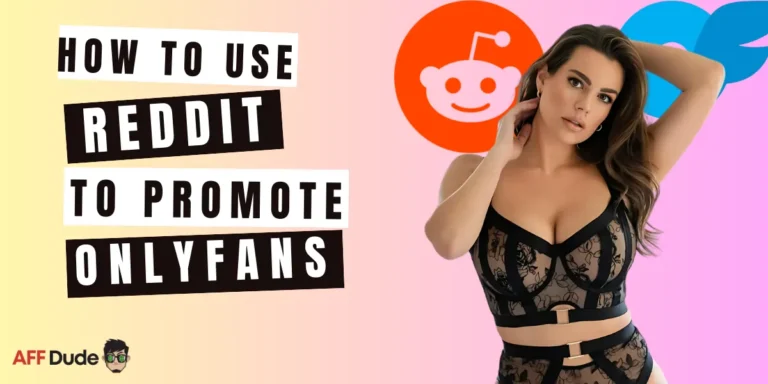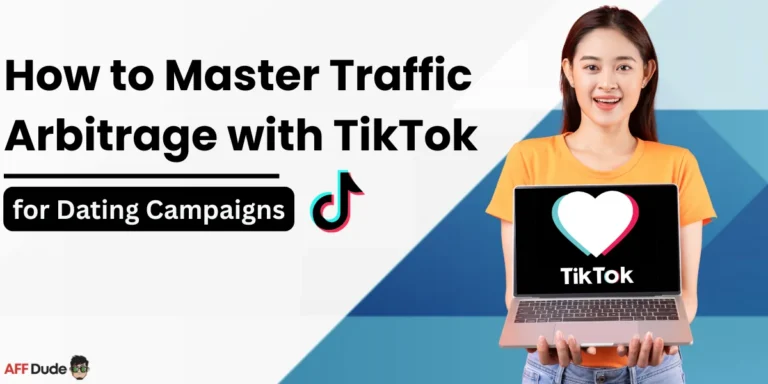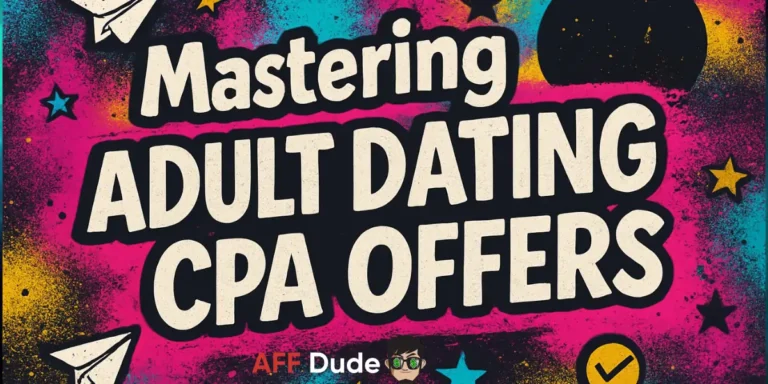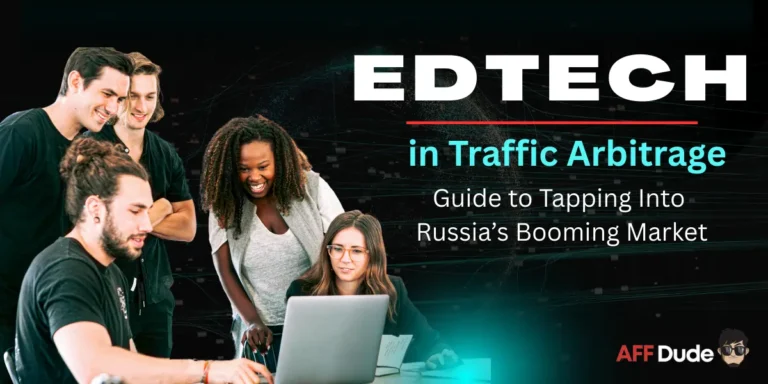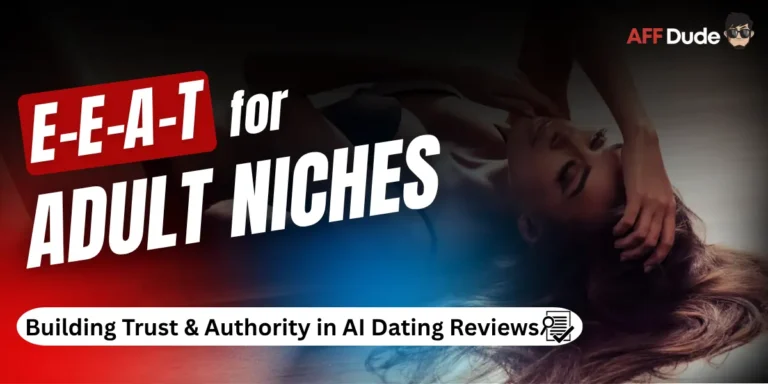Welcome to AffDude! I’m Ali, and I’ve been knee-deep in affiliate marketing for years, with a special focus on dating campaigns.
From promoting dating apps to crafting offers that click with singles, I’ve tested countless strategies to see what drives results.
One approach has consistently stood out: audience segmentation. It’s not just a fancy term—it’s the backbone of campaigns that connect, convert, and cash in.
In this guide, I’ll walk you through everything I’ve learned about audience segmentation, from why it’s a must-have to how I use it in my dating offers.
Expect practical steps, real examples from my own campaigns, and a peek into what’s coming in 2025.
If you’re running affiliate marketing campaigns—or just curious about boosting your results—this post is for you.
Quick Recap Table: Segmentation Types
| Type | Focus | Example |
|---|---|---|
| Demographic | Age, gender, income | Premium apps for older high-earners |
| Geographic | Location | City events for urban singles |
| Behavioral | Actions | Deals for frequent app users |
| Psychographic | Interests, values | Adventure dates for thrill-seekers |
What Is Audience Segmentation?
Audience segmentation is all about breaking your target audience into smaller, focused groups based on traits they share. Think of it as sorting your email list or ad audience into buckets—each one gets a message that hits home. Here’s how I break it down:
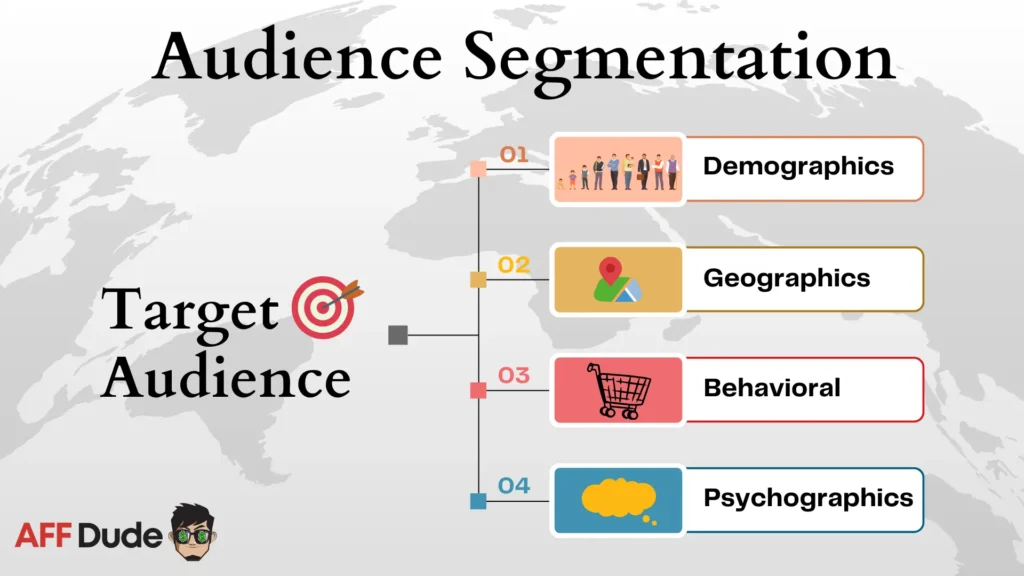
In my dating campaigns, this looks like targeting women aged 25-35 who want serious relationships with ads about finding “the one,” while sending guys aged 18-24 looking for fun something playful about casual dates.
The result? Engagement shoots up because the message fits the person.
Segmentation isn’t just splitting people up—it’s about knowing who they are and what they need.
Why Audience Segmentation Matters⁉️
So, why bother? Because it pays off—big time. Here’s what I’ve seen in my campaigns, backed by some eye-opening stats:
Numbers back this up: 80% of people prefer brands that personalize, and 77% of marketing ROI comes from targeted campaigns.
For me, segmentation turns a scattershot approach into a laser-focused win.
Types of Audience Segmentation
Let’s break down the main ways to segment your audience. Each type has its strengths, and I mix them depending on the campaign:
Demographic Segmentation
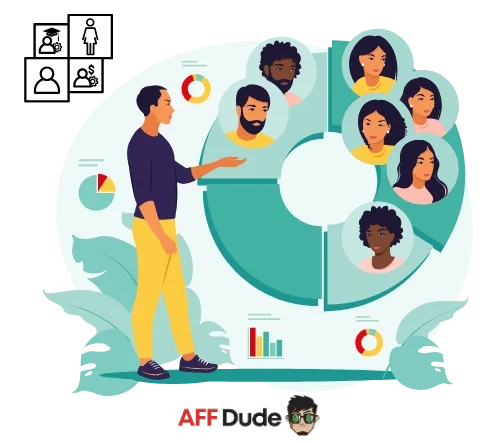
What It Is: Grouping by age, gender, income, or education.
Example: In my dating campaigns, I might target men over 40 with higher incomes for premium dating app subscriptions.
Why It Works: It’s simple and helps you match offers to life stages or budgets.
Geographic Segmentation
What It Is: Sorting by location—think country, state, or city.
Example: I push urban dating events to city singles but skip rural areas where they’re less relevant.
Why It Works: Location shapes habits and needs—big time in dating.
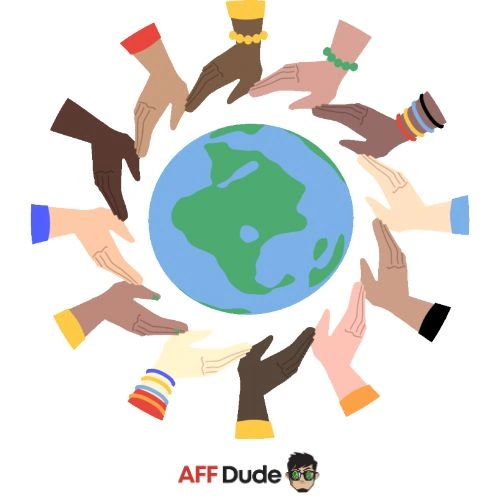
Behavioral Segmentation
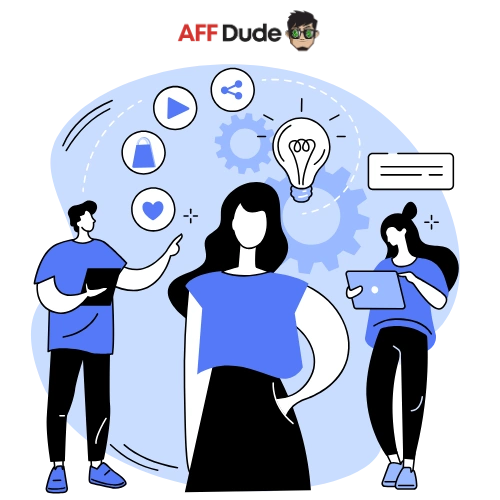
What It Is: Based on actions, like clicks, purchases, or app use.
Example: I send special offers to users who’ve swiped 50 times on a dating app but haven’t upgraded.
Why It Works: It predicts what people might do next, making your timing spot-on.
Psychographic Segmentation
What It Is: Focused on interests, values, or personality.
Example: Adventure-loving singles get ads for outdoor date ideas, while homebodies see cozy night-in promos.
Why It Works: It taps into what drives people emotionally—huge for dating.

Using these together gives me a clear picture of who I’m targeting and why.
How to Implement Audience Segmentation: A Step-by-Step Guide
Ready to segment your audience? Here’s the playbook I use for my dating campaigns:
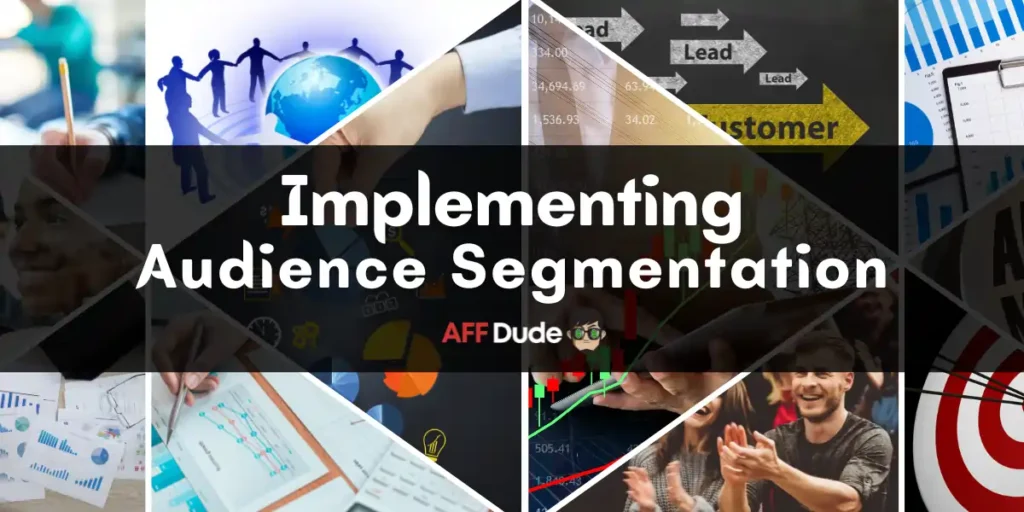
Tools like Facebook Ads Manager (for custom audiences) and Voluum (for tracking) make this easier. In my campaigns, testing showed a 15% conversion bump when I nailed the segment.

Get 60% Off Voluum [Limited Time Deal]
Save 60% on Voluum with this exclusive offer. Use code BLOGGINGECLIPSE at checkout. Perfect for performance marketers.
Save 60%
Real Examples From My Dating Campaigns
Let me share some wins from my own work:
These show how segmentation turns guesses into gains.
Common Mistakes to Dodge
I’ve messed up plenty—here’s what to avoid:
Steering clear of these keeps your campaigns sharp.
What’s Next: Audience Segmentation in 2025
The game’s changing—here’s what I’m watching:
AI’s the big one—it’s making segmentation smarter and faster.
Advanced Segmentation Techniques for Affiliate Marketing Success

Segmentation is a game-changer in affiliate marketing, and as I’ve scaled my campaigns—particularly in the AI dating niche—I’ve found that going beyond the basics can unlock incredible results.
AI-driven predictive segmentation uses machine learning to analyze past user behavior and predict future actions.
For example, in my dating campaigns, I’ve used AI to identify users likely to upgrade to a premium plan based on their app usage patterns. This lets me hit them with a timely offer—like a 24-hour discount—right when they’re primed to act.
Tools like Voluum or HubSpot’s AI features make this accessible, boosting conversions with less guesswork.
Micro-segmentation zooms in on ultra-specific audience groups. Instead of targeting “singles aged 25-35,” I might focus on “vegan singles who love yoga and live in coastal cities.” This precision shines in affiliate marketing, where niche offers—like a dating app for fitness buffs—can connect deeply with the right crowd.
Gather data from surveys, social media, or purchase history to define these segments. The extra effort pays off in engagement and loyalty.
Real-time segmentation lets you adapt on the fly. If someone checks out a dating app’s pricing page but doesn’t sign up, I can instantly retarget them with a tailored ad or email. This keeps your campaigns relevant and urgent—key drivers in affiliate success.
Platforms like Google Ads and Facebook Ads Manager offer real-time options, and as tech advances, this will only get sharper.
These techniques have kept me ahead in the dating niche, and they’re essential as audiences demand more personalized experiences.
Tools I Swear By
Here’s what I use to make segmentation work:
- Google Analytics: Tracks behavior—pages visited, time spent. Free and powerful.
- Facebook Ads Manager: Builds custom audiences from my lists, plus lookalikes.
- Salesforce: Manages customer data for bigger campaigns.
- Voluum: Tracks affiliate performance—key for optimizing.
These keep my dating offers humming.
Why It Works in Affiliate Marketing
In affiliate marketing—especially dating—every click counts. Segmentation lets me:
- Match offers to intent (serious daters vs. casual flirts).
- Stretch my ad budget further.
- Build trust with relevant messages.
It’s why my campaigns went from “meh” to “money” once I started segmenting.
Conclusion: Your Path to Segmentation Mastery
Audience segmentation isn’t optional—it’s essential. Whether you’re pushing dating offers or something else, splitting your audience into focused groups boosts engagement, conversions, and cash flow. With tools like Voluum s and a little testing, you can make it happen.
Got questions? Tried segmentation yourself?
Drop a comment—I’d love to swap stories! Let’s make 2025 your best year yet.

